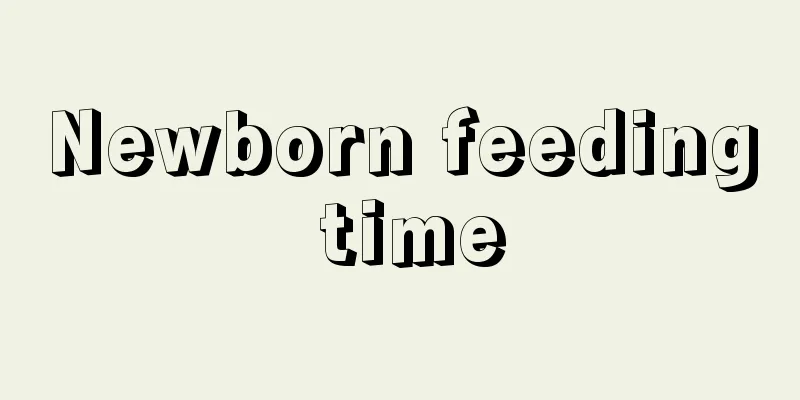Newborn feeding time

|
The biggest characteristics of a newborn are eating and sleeping. It can be said that they sleep for more than ten hours a day, and when they wake up, they feed. Especially in the first month, it can be said that they do nothing but eat and sleep. This is a period that is particularly easy to care for. But how long does a newborn baby eat at one time? This is what many mothers want to know. The time a newborn baby feeds at one time depends on the individual differences of the child. Some need about ten minutes, and some need twenty minutes. 1. The feeding time of newborns Each feeding time for a newborn is about 10 minutes. It is generally believed that breastfeeding on one side only takes 10 minutes. The answer to this question also varies. Your baby may want to eat one, two, three or even four sides, and a complete meal usually takes about 20 minutes, sometimes up to 40 minutes (remember, in the beginning most of your day will be spent feeding and caring for your baby, but this will change as he becomes more efficient). In the first 2 minutes of breastfeeding, the baby can consume 50% of the total milk. In the first 4 minutes, the baby can consume 80-90% of the total milk. In the next 5 minutes, the baby can hardly consume any milk. This shows that the longer the breastfeeding time, the more milk the baby consumes. From the nutritional value point of view, 4 minutes of breastfeeding on one side is enough. But the last 5 minutes cannot be considered redundant, because they have biological significance. On the one hand, they can promote the release of prolactin and stimulate milk secretion. On the other hand, they can strengthen the relationship between mother and child. If one side is still not enough after sucking it out, you can feed the other side. 2. Standards for the amount of milk a baby eats The stomach capacity of a newborn is related to the amount of milk fed, and the stomach capacity is also related to the baby's weight. What is stomach capacity? In simple terms, it refers to the size of the stomach and how much food it can hold. Generally speaking, the ideal amount of milk for a newborn is 30-60 ml, and the baby needs to be breastfed 6-8 times a day. Of course, as the digestive ability improves, the amount of milk needs to be gradually increased. After 3 months, the stomach capacity of the newborn increases significantly to about 100 ml. It is recommended to feed 90-120 ml of milk each time, but the number of feedings should be reduced accordingly. |
<<: How long can a newborn baby use bath gel
Recommend
What to do if your child has a hoarse voice due to a cold
Every time the children at home catch a cold, the...
What can children eat to improve their memory?
Memory is very important for everyone, especially...
What to do if your child has dry lips
We all know that children's dry lips may be c...
What recipes can I eat when I have chickenpox
Children are more prone to chickenpox. When the b...
What to do if your child doesn't like to write
Parents are more concerned about their children&#...
Early symptoms of pneumonia in children
Pneumonia in children is a very common lower resp...
Can children with acute rash take a bath
The occurrence of roseola infantum always worries...
Baby safety seat
Child safety seats are mainly designed to be safe...
Recipes for how to make children grow taller
When it comes to height increase, many parents wi...
How to relieve neonatal intestinal spasms?
After a baby is born, all organs of the body are ...
How to treat a five-year-old child with a fever
Cold is a very distressing disease, especially wh...
Baby chicken skin
Chicken skin is actually a very troublesome hered...
Reasons why babies are restless when sleeping
Many parents or people who have accompanied their...
What to do if your child has indigestion and vomiting
Children have weaker constitutions and if they do...
How to treat chronic pharyngitis in children effectively
Chronic pharyngitis is a disease that should not ...









